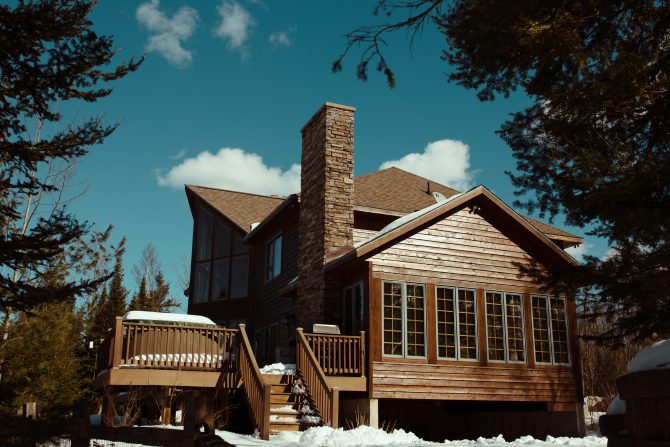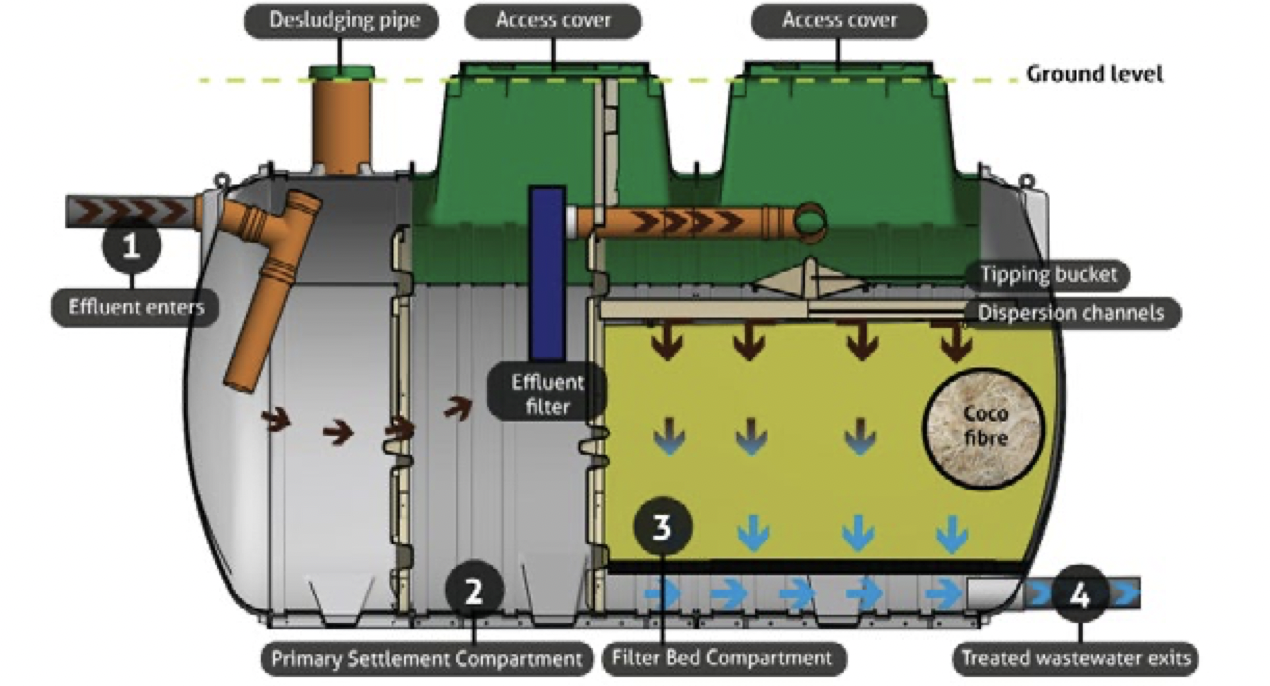Individual Sewage Treatment Systems for Your French House Without Percolation Area
Essential Reading


In France, a house must be equipped with an individual or domestic sewage treatment system when it is not connected to the main sewer. A problem arises when the house has no or too little land to install a system such as a septic tank with a percolation area. A solution without a large or no percolation area must then be considered.
On the individual (or non-collective) domestic sewage treatment market, several solutions are available: septic tanks with percolation area and approved devices such as small wastewater treatment plants and compact filters.
The French Ministries of Ecology and Health list 8 families of installations in the guide to help with decision making published in September 2012:
- Tank and underground percolation area in the soil in place
- Tank and underground percolation area in reconstituted soil (sand filter)
- Tank and zeolite filter bed
- Tank and compact filter bed
- Planted filter bed (with or without tank)
- Free culture small wastewater treatment plant
- Fixed culture small wastewater treatment plant
- Dry toilets
Domestic sewage treatment systems with no percolation area
According to the guide, which can be downloaded from the website of the Ministry of Ecology and Sustainable Development, when you have very little land and you need a sewage system with no percolation area, only two types of products are possible because they can fit within a small space:
- Tank and compact filter bed (maximum 20 m2 of surface area)
- Small wastewater treatment plant (free or fixed culture) (maximum 10 m2 of surface area)
In comparison, a septic tank with underground percolation area in the soil in place has a footprint of more than 100 m2.
For septic tanks with underground percolation area in reconstituted soil (sand filter), the footprint is at least 40 m2, without forgetting the distances to be respected in relation to existing buildings, property limits, etc.
There is therefore a big difference between the surface area occupied by a traditional system (septic tank with a percolation area) and the surface area occupied by an approved system (tank and filter bed, small wastewater treatment plant). To understand the reasons for this, it is necessary to look at the operation of a septic tank.
Note: dry toilets can only treat faecal matter. An additional device chosen among the families listed above must therefore be connected to your house to treat the rest of the effluents (household effluents coming from your sinks, showers, etc.).
How Does A Septic Tank With Percolation Area Work?
A septic tank is used to pre-treat wastewater by retaining the heaviest sludge, solids and floats (mainly oil and grease). If there is not enough space, it could be tempting to install a septic tank without its percolation area system – but the SPANC (Public Service for Non-Collective Domestic Sewage Treatment) would immediately require you to bring your installation up to standard, which would generate high additional costs. Indeed, the effluents that come out of a septic tank are still loaded with pollution and germs that are dangerous for health and the environment.
For this reason, a percolation area of at least 20 m2 to more than 100 m2 must be installed at the outlet of the septic tank. The percolation area of pre-treated effluent on a large surface allows to finish the wastewater treatment process by using the purifying power of the soil in place or of a reconstituted soil. This percolation area can take several forms such as infiltration trenches or filter beds.
Why Small Wastewater Treatment Plants and Compact Filters Don’t Need Percolation Area
Read more below about both solutions.
Compact filter
Composed of a septic tank (2 below) and a filter bed (3 below) (in zeolite, coconut fibre, etc…). It is an ideal solution for second homes as the compact filters can deal with their intermittent frequentation and the strong variations of loads. Please note that it does not require electricity, except if a pump is necessary to evacuate the treated effluents.
How a compact filter (Tricel Seta Simplex) works

Small wastewater treatment plant
An all-in-one device that will treat wastewater from A to Z. It is an ideal solution for main residences. It is equipped with an air compressor, which is necessary to purify the water in a very small space, and sometimes with a turbine or an agitator, which implies a small electrical consumption.
How a sewage treatment plant (Tricel Novo) works

Sewage Treatment Solutions Installed In Garage, Above Ground
As mentioned above, compact filters take up much less space than traditional sewage treatment systems with conventional percolation area. Since they provide both pre-treatment and treatment of wastewater, usually in a single compartmentalised tank, small wastewater treatment plants are themselves twice as compact as “compact filters.”
If no domestic sewage treatment system can be installed on your land due to lack of space, another solution is available: some small wastewater treatment plants can be installed above ground with a retaining wall around the tank, to reconstitute underground installation conditions. They can thus be installed in a garage, a cellar (see photo below) or other places that are difficult to access.
Small wastewater treatment plants are therefore, along with compact filters, the ideal solution for wastewater treatment on small plots of land.

Share to: Facebook Twitter LinkedIn Email



